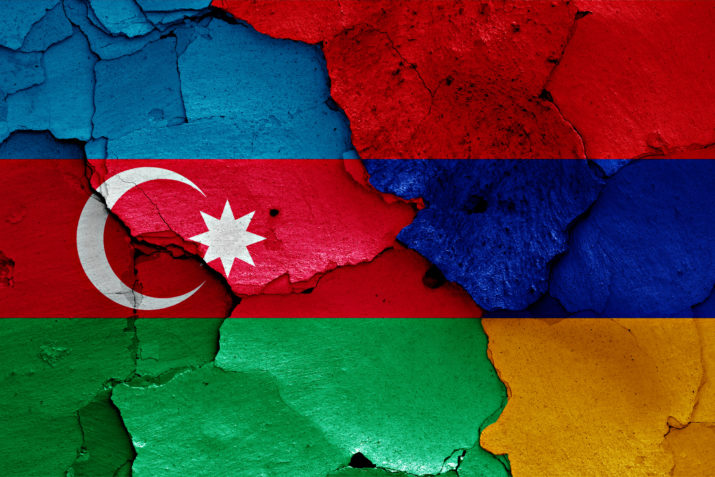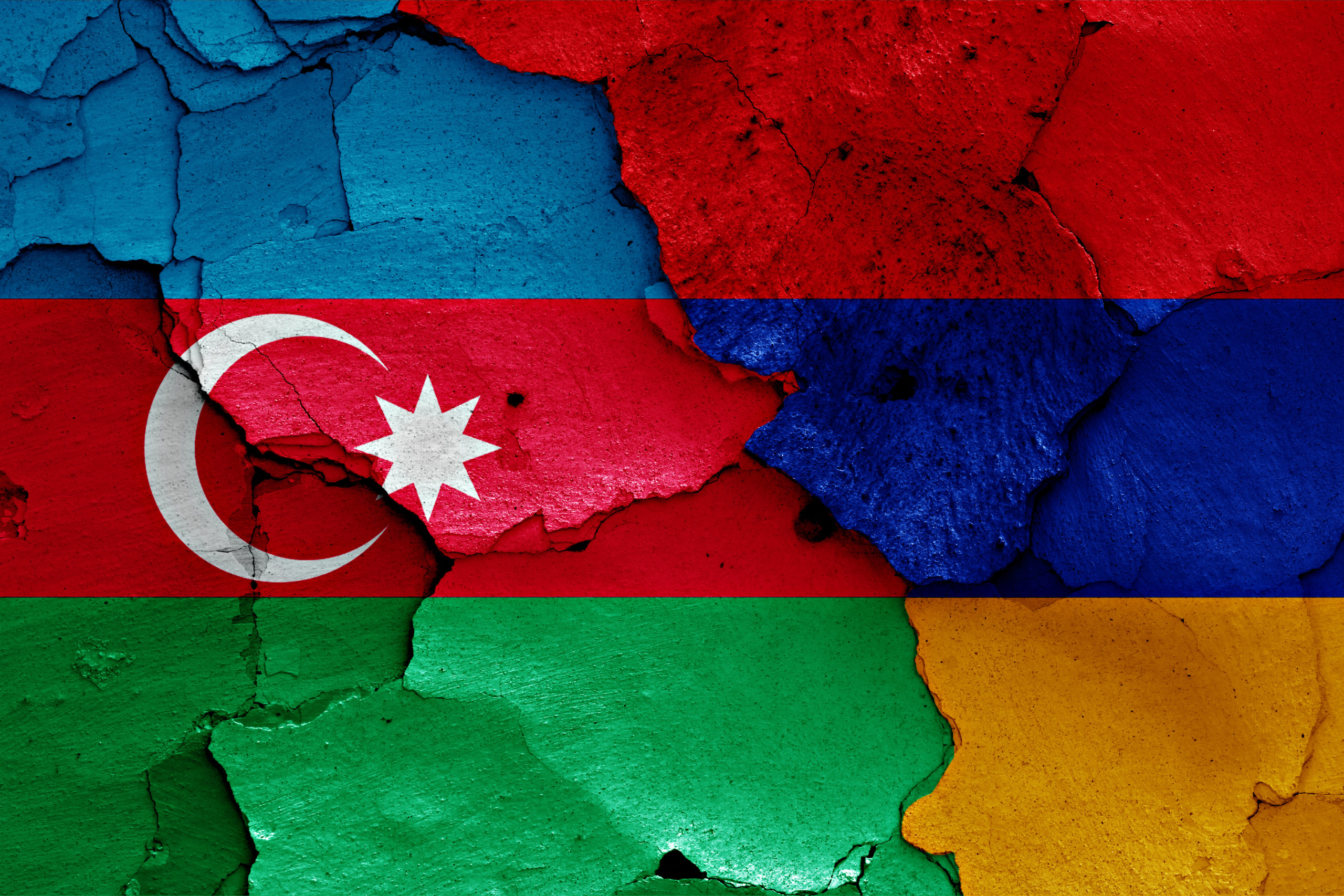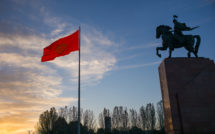
Do the New Realities in Nagorno-Karabakh Change the South Caucasus’s Ties with the Eastern Partnership?

This is part of a roundtable on the EU Neighborhood.
In the last nine weeks we were witnesses to the thawing of the Nagorno-Karabakh conflict. This is a decades-long conflict between Armenia and Azerbaijan, which has escalated sharply in the last weeks. The conquest of territories by Azerbaijan intensified the fighting between the two actors. It is an essential moment in the history of Armenians and Azerbaijanis. The military and political map of the South Caucasus region has changed fundamentally. This war that has taken place on the periphery of Europe in recent weeks is both a humanitarian catastrophe and a great international failure.
New realities and old tensions in Nagorno-Karabakh
The Nagorno-Karabakh region was a center of tension from the beginning. The mountainous region hosted a mixed community of Armenians and Azerbaijanis and was seen by both nations as a central point that had a major significance in creating history and national identities specific to each culture. In 1992, the first post-Soviet conflict broke out. During two years, Armenians and Azerbaijanis armed forces fought for control of the disputed region —Nagorno-Karabakh. After this war, Armenia won the victory and the Nagorno-Karabakh region and seven other districts in the geographical proximity came under the control of the Armenian state even if the small conflicts continued to take place.
For most of this period, negotiations on the status of the Nagorno-Karabakh area, as well as the possibility of Armenia renouncing the territories belonging to Azerbaijan, have stalled. This situation is not to the liking of the politicians in Azerbaijan at all. Thus, in the face of this situation, disappointed by the fact that negotiations have been completely blocked for years and no action has been taken in this regard, Azerbaijan has increasingly called on military operations to make its voice heard and to obtain the territories that Armenia currently administers.
Recently, especially after the 2000s, as a result of the increase in oil revenues, Azerbaijan has initiated new actions regarding the trading of heavy weapons. This strategy was intended to change the balance of power by any means and to destroy the status quo.
The Eastern Partnership (EaP), the Madrid Principles, the OSCE Minsk Group (created in 1992) and other instruments used over the three decades, failed at the end of September 2020. During this period, both actors (Armenia and Azerbaijan) were incapable to have a dialogue in order to resolve this conflict. In the last six years, the frequency of conflicts and the number of deaths resulting from clashes between Armenia and Azerbaijan following escalating conflicts in the Nagorno-Karabakh region have increased exponentially.
One of these clashes also took place in 2016 and it was considered one of the most intense battles ever fought between Armenians and Azerbaijanis. But the September 2020 conflict is much bigger. The four-day war was an unexpected and violent attack due to the use of heavy artillery, which led to several territorial changes to the advantage of the Azerbaijanis. This was the time when international experts considered that the Nagorno-Karabakh conflict was no longer frozen.
By analyzing the evolution of the conflict in the South Caucasus, it seems that these clashes turn into wars that last several days and cause damage to the two countries in conflict. One of the most worrying aspects of the mini-wars is that they signal a slow but irresistible shift towards a new era of hostile relations between Azerbaijan and Armenia. The confronting parties are moving from two decades of “frozen conflict resolution” to an era of “salami slicing wars.”[1]Thus, we are currently witnessing the outbreak of small conflicts meant to extract diplomatic concessions or to regain territories that are administered by the adversary through continuous but gradual action, side by side.
September 2020 clashes—something new and something old?
According to international experts, there are three factors that have led to a new destabilization of the situation and the outbreak of a new conflict. First of all, Azerbaijan purchased new military equipment from Israel and Turkey and improved its military capacity. Second, Turkey has been more involved in the conflict than it has been so far and this was visible during the last conflict and also during this period of peace. Third, France, the United States and Russia (the three states responsible for managing the conflict and finding a way to resolve it) were concerned with domestic and international issues and did not focus their efforts on finding solutions to mediation and settlement.
We witnessed a clear erosion of the negotiation process during the last five months. On July 6, 2020, the President of Azerbaijan Ilham Aliyev criticized the international mediators dealing with the negotiations on the settlement of the Nagorno-Karabakh conflict that the peace process had “become meaningless.”[2] Less than a week after this statement, Azerbaijan was attacked by the Armenian armed forces, which were on the state border near the Tovuz region of the country. Although the situation calmed down on July 15, Azerbaijan continued to invoke the situation of Russia’s military transports to Armenia by using complex transport routes. On September 19, the Azerbaijani president warned that Armenia was preparing for a new war, concentrating its forces near the Nagorno-Karabakh contact line. Less than ten days after this statement, on September 27, the war already started.
The OSCE Mink Group has had little success in its twenty-eight years of operation, and this is due to the involvement of the Russian Federation in this conflict resolution process. The Russian Federation has created so-called buffer zones in the South Caucasus region to maintain its influence in the region. The frozen conflicts in this region are the ones that ensure Russia’s presence in the area. This is the reason that Russia has managed to mediate a ceasefire between Armenia and Azerbaijan after six weeks of conflict.
Following the signing of the peace agreement, the lives of the civilian population are no longer in danger, and hundreds of thousands of Azerbaijani refugees displaced by the conflict in the late 1980s and early 1990s may celebrate the possibility of leaving their home. But Armenians are crushed and fearful, and the protests that have erupted in the Armenian state can destabilize Yerevan’s power at any time.
Currently (November 30, 2020) the ceasefire agreement mediated by Russia after three failed attempts maintains a state of peace in the region. International actors involved in managing this conflict must ensure that the fire ceases and the agreement is respected. There should be also taken steps to ensure that the new regional order benefits everyone involved.
Where is the EU?
The European Union created special tools in its neighbourhood in order to support the post-Soviet countries in their development process, such as the wider European Neighbourhood Policy or the specific Eastern Partnership initiative.
As far as the EU is concerned, it has never played an important role in the conflict between Armenia and Azerbaijan. When the first conflicts began in 1990, the EU had no interest in gaining the role of geopolitical actor as it has today. Over time, the EU has had to deal with security challenges on its periphery, and conflicts in the Balkans or the South Caucasus have accelerated debates over the EU’s military capabilities, that would be complementary to soft security tools. EU promotes its model of soft-power towards Eastern Neighbourhood, but in what concerns the conflict situation from the Nagorno-Karabakh region, the soft power is not enough to resolve this dispute.
In his new article, “The Eastern Partnership enters a new decade,”[3] Pavel Havlíček talks about the evolution of Eastern Partnership during the last year and its future. In what concerns the South Caucasus countries, there are a lot of problems that affect the progress of Eastern Partnership. A failure by the European Union to respond properly to the conflict in its Eastern Neighborhood undermines Europe’s claims to be a strategic player in its neighborhood.[4] The challenge facing the European Union and the OSCE is to try to relaunch another kind of peace process that responds to people’s needs and leads to the resolution of this conflict.
The evolution of relations in the Eastern Partnership can have unpleasant consequences for the European Union, if it intervenes without a clear vision of things, but the EU stops at declarative positions. There are some EU member states that reacted strongly at the beginning of the conflict and the most vocal country is still France, which also co-chairs the OSCE Minsk Group together with Russia and the US.
EU creates different mechanism such as the Association Agreement and the Deep and Comprehensive Free Trade Area (AA/DCFTA), new priorities concerning digitalization and measures to combat the climate change, also a new approach for promoting societal resilience within the Eastern Partnership countries. However, the EU does not engage in the political debate and in the analysis and resolution of the frozen conflict. The European Commission’s approach to the states of the Eastern Partnership was criticized during the last years for the excessive use of soft power tools and the choice of areas of involvement.
The COVID-19 pandemic, the political situation, the economic crisis and also the high level of tension and societal polarization are just some of the most important internal challenges that the EaP must take into account in the near future.Beside this, the EaP needs to face the separatism problems and the conflicts that could destabilize the peace and security in the South Caucasus states. In its Eastern Neighborhood, the EU’s basic interest is to be surrounded by a “ring of friends,” as then European Commission president Romano Prodi highlighted in 2002. To forge the “common area of shared democracy, prosperity and stability”[5] is the EU’s main goal in the Eastern Partnership.
Media and information warfare, cyber security, intelligence and security services, defense and energy are the five most important areas of the neighborhood policy that the EU needs to expand to develop a more active and coherent attitude in the near future.
Why is it important for the EU to do this? Because the European Union needs to strengthen its power to address Russia’s operations in the Eastern Partnership countries. Moreover, the EU must adopt a counter-subversion policy that can protect the economic, financial, societal and political reforms implemented through its Eastern Partnership in the South Caucasus.
Even if the EU was not involved in managing the Nagorno-Karabakh conflict, it is important for the European actors to realize that the Eastern Partnership region has a high importance in the world and the European security agenda is dependent on the security situation at its outskirts.
In my opinion, to ensure good relations with the South Caucasus countries, the European Union, through the Eastern Partnership, must get involved in order to provide the Armenian people solid guarantees about their civilian population, security and aspirations. The EU will also play a very important role in ensuring security and stability in the region, especially if, for the next five years, the Russian Federation will be present in the region through the armed forces that have the role of ensuring peace. Additionally, the European Union must continue to be involved in the economic recovery process of the Eastern Partnership countries and also to push for the adoption of pro-democratic and pro-market reforms.
Conclusion
The Russia-mediated ceasefire agreement, adopted on November 10, leaves more questions than answers. International actors must face its circumstances in order to prevent a new conflict, but it must not be seen as a lasting solution. As a result of the latest ceasefire agreement, Russia views the vulnerability, instability, weakness, and dependency of South Caucasus countries as a key mechanism through which to exercise influence in its immediate neighborhood.
Any hope for a multifaceted peace agreement that would produce lasting territorial stability and resolve the legal status of the region is now mediated by Moscow. As long as Russia is co-chair of the OSCE Group in Minsk, the settlement of the Nagorno-Karabakh conflict will never be on the negotiating table.
The Nagorno-Karabakh conflict is one of the most difficult disputes on the EU decision makers’ table. Now is the moment when EU must show its unity and support for its neighborhood, because the protests and discontent of the Armenians can affect peace and stability in the region. It must be noted though that the key players in the region are not the EU countries; instead, Turkey, Russia, and now Azerbaijan increasingly see military action as an effective and safe path to success. The real winners of the latest Nagorno-Karabakh conflict are Turkey and Russia. Moscow has gained greater control over Armenia’s domestic and foreign policies and Turkey has much more military and security leverage over future developments in Azerbaijan. As long as the EU continues to focus almost exclusively on diplomatic and economic means to exercise power in its neighborhood, this trend will continue.
In order to properly make its point in South Caucasus and support its global ambitions, the EU should begin developing military, intelligence and cyber security partnerships with several countries on its Eastern flanks. It must become a power that can exert influence in the field of security, in addition to its political and economic influence. Only then will the EU’s voice be better heard where it matters most.
Georgiana-Cătălina Marcu is a PhD student, in the second year of study, at the National University of Political Science and Public Administration (SNSPA), Bucharest, Romania. With a background in political science and International Relations and European studies, her research interests are related to the European Union’s relations with the countries of the South Caucasus in the post-Soviet period, especially in terms of their economic and political development.
References:
DE Waal, Thomas, “The Caucasus Burns While Europe Struggles,” Carnegie Europe, October 8, 2020, https://carnegieeurope.eu/strategiceurope/82926
General Secretariat of the Council, “Council Conclusions on Eastern Partnership policy beyond 2020,” Council of the European Union, May 11, 2020, https://www.consilium.europa.eu/media/43905/st07510-re01-en20.pdf.
Havlíček, Pavel, “The Eastern Partnership enters a new decade,” New Eastern Europe, November 16, 2020, https://neweasterneurope.eu/2020/11/16/the-eastern-partnership-enters-a-new-decade/.
Kucera, Joshua, “Azerbaijani president calls into question negotiations with Armenia,” Eurasianet, July 7, 2020, https://eurasianet.org/azerbaijani-president-calls-into-question-negotiations-with-armenia.
Popescu, Nicu, “A hill here, a village there: Nagorno-Karabakh and the salami-slicing wars,” European Council on Foreign Relations, October 2, 2020, https://bit.ly/36jAyid.
[1] Nicu Popescu, “A hill here, a village there: Nagorno-Karabakh and the salami-slicing wars,” European Council on Foreign Relations, October 2, 2020, https://bit.ly/36jAyid.
[2] Joshua Kucera, “Azerbaijani president calls into question negotiations with Armenia,” Eurasianet, July 7, 2020, https://eurasianet.org/azerbaijani-president-calls-into-question-negotiations-with-armenia.
[3] Pavel Havlíček, “The Eastern Partnership enters a new decade,” New Eastern Europe, November 16, 2020, https://neweasterneurope.eu/2020/11/16/the-eastern-partnership-enters-a-new-decade/
[4] Thomas De Waal, “The Caucasus Burns While Europe Struggles,” Carnegie Europe, October 8, 2020, https://carnegieeurope.eu/strategiceurope/82926
[5] General Secretariat of the Council, “Council Conclusions on Eastern Partnership policy beyond 2020,” Council of the European Union, May 11, 2020, https://www.consilium.europa.eu/media/43905/st07510-re01-en20.pdf.
Photo: Flags of Azerbaijan and Armenia painted on cracked wall
Published on February 9, 2021.




